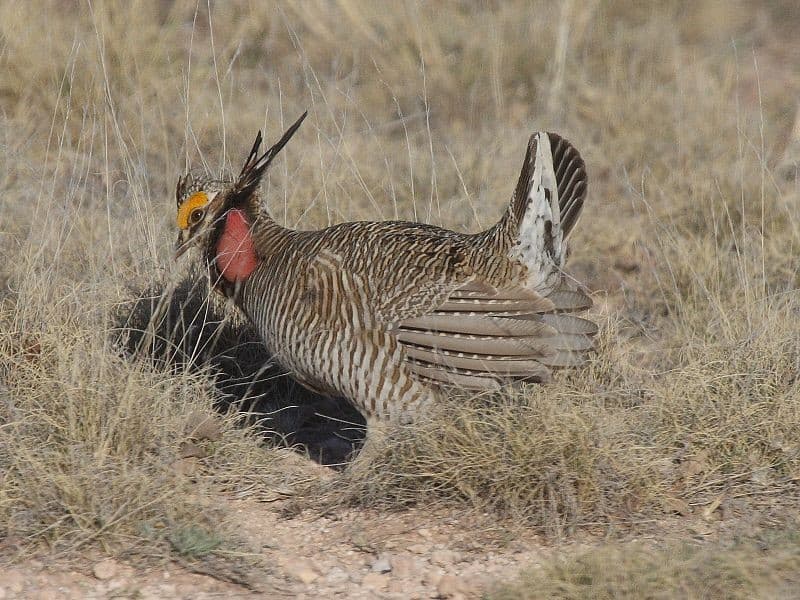
Species
Lesser Prairie-Chicken (Tympanuchus pallidicinctus)
Principal biologist(s)
Dustin Long, Carter Kruse
Project Locations
Z Bar Ranch, KS
Conservation Problem
Rapid, range-wide decline due to habitat loss and fragmentation
Conservation Status
Listed as federally threatened in 2014
Project Goals & Objectives
Our overall goal is to restore ~25,000 acres of the Z Bar mixed grass prairie to a condition suitable for lesser prairie chickens and to integrate the project into existing bison production and black-tailed prairie dog restoration efforts at the ranch. To this end, we aim to:
– Increase lesser prairie-chicken numbers at the Z Bar by managing for a diverse landscape mosaic that includes breeding, nesting and brood rearing habitats within close proximity to each other
– Use of fire to improve brood rearing habitat and control woody vegetation. Each pasture will be burned at least once every 10 years
– Mechanical removal of woody vegetation from the uplands to limit avian predation and improve suitable lesser prairie-chicken habitat
– Using grazing to produce a mosaic of habitats that include lightly grazed pastures with robust standing vegetation, and heavily grazed pastures with minimal standing vegetation
Project Background
The lesser prairie-chicken project at the Z Bar represents one of TESF’s newest conservation efforts on Turner properties. Beginning in early 2015 we began to manage 32,525 acres to benefit lesser prairie-chickens through a cooperative 10-year agreement with WAFWA. Central to the agreement is habitat restoration, which includes the removal of woody vegetation from the uplands on 1,949 acres, prescribed fire in each pasture at least once every ten years, and a prescribed grazing plan intended to help create the vegetative mosaic required by lesser prairie-chickens. By year two of the project, we had satisfied all required habitat restoration and grazing requirements (see Figs. 7.2 and 7.3). In March 2016, 41,000 acres of the Z Bar burned in what ended up being the largest wildfire in Kansas history. Ecologically, the Z Bar largely benefitted from the fire as it served to refresh native grasses, increase ecosystem heterogeneity, and eliminate invasive woody brush and trees from the uplands; all to the benefit of lesser prairie-chickens. Because of this wildfire no prescribed burns were performed in 2016 or 2017.
Over the course of this project lesser prairie-chickens have routinely been observed and sightings at the Z Bar appear to be increasing; however, we have yet to verify that lesser prairie-chickens are reproducing on the ranch.
